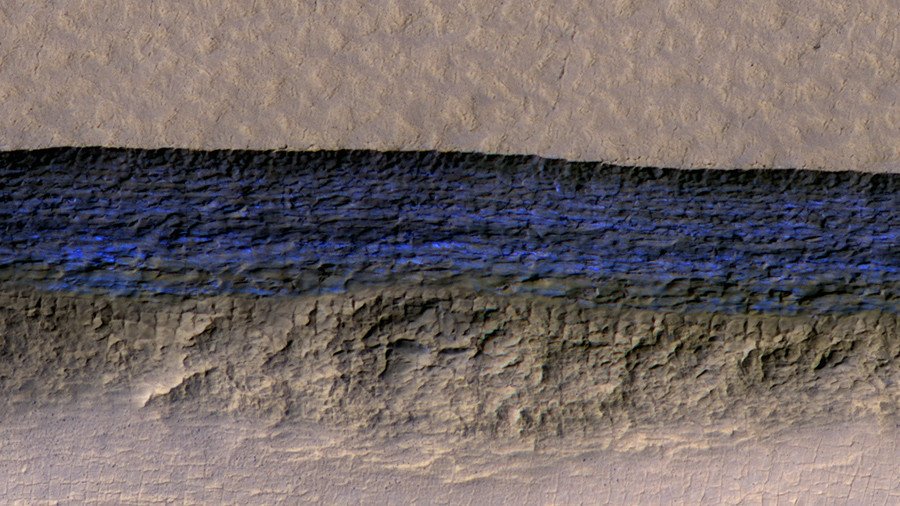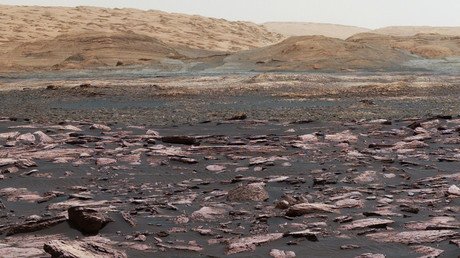Mars ice cliffs could be key to supporting life on Red Planet

Mars has ice sheets more than 100 meters deep hiding beneath its red dust, offering a potential water source for future explorers of the Red Planet, according to new research.
A team of scientists, led by Colin Dundas, a geologist at the US Geological Survey, analyzed data from the Mars Reconnaissance Orbiter (MRO), specifically looking at eight areas where erosion occurred.
The results revealed massive subsurface ice sheets on the planet extending from just below the surface to a depth of at least 100 meters (328ft).
Mars might not be as dry as previously thought https://t.co/eO943EF8hj
— RT (@RT_com) December 25, 2017
The remarkable ice cliffs appear to contain distinct layers, which could preserve a record of Mars' past climate, according to the report.
Scientists say an analysis of the deposits would unleash a treasure trove of information to geologists about the past Martian climate.
“That preserved record would be of extreme importance to go back to,” G. Scott Hubbard, a space scientist at Stanford University in Palo Alto, California told Science.
The discovery is particularly exciting for future human exploration of the planet previously renowned for its dry arid landscape.
Future Martian explorers may have a more accessible supply of water thanks to a new discovery from our Mars Orbiter: Eight sites of thick, relatively pure water ice deposits, likely accumulated as snow long ago, have been found on the Red Planet. Details: https://t.co/fE16INLoaepic.twitter.com/bITL6PdfjD
— NASA (@NASA) January 11, 2018
Scientists point out that the hidden ice sheets could pave the way for supporting life on Mars. These sites are “very exciting” for potential human bases, Angel Abbud-Madrid, director of the Center for Space Resources at the Colorado School of Mines in Golden said.
The ice cliffs promise abundant, accessible ice, noted Abbud-Madrid, who led a recent NASA study exploring potential landing sites for astronauts.
This is not the first time ice has been found on Mars. Over the last decade the MRO has returned high resolution images and data detailing the landscape.
A radar instrument on the MRO previously detected signatures of thick, buried ice across the planet’s belly, however, this latest study indicates a greater prevalence of Martian ice.
“This kind of ice is more widespread than previously thought,” Dundas told Science.
READ MORE: Martian ‘rocket test’ proves worms can thrive in Red Planet soil
The cliffs were all found at latitudes about 55° north or south – discouraging latitudes for a solar-powered human base, according to the team.
Scientists now want to seek out similar cliffs closer to the equator, hoping that the next surprise awaiting them is the discovery of ice nearer to the tropics.














